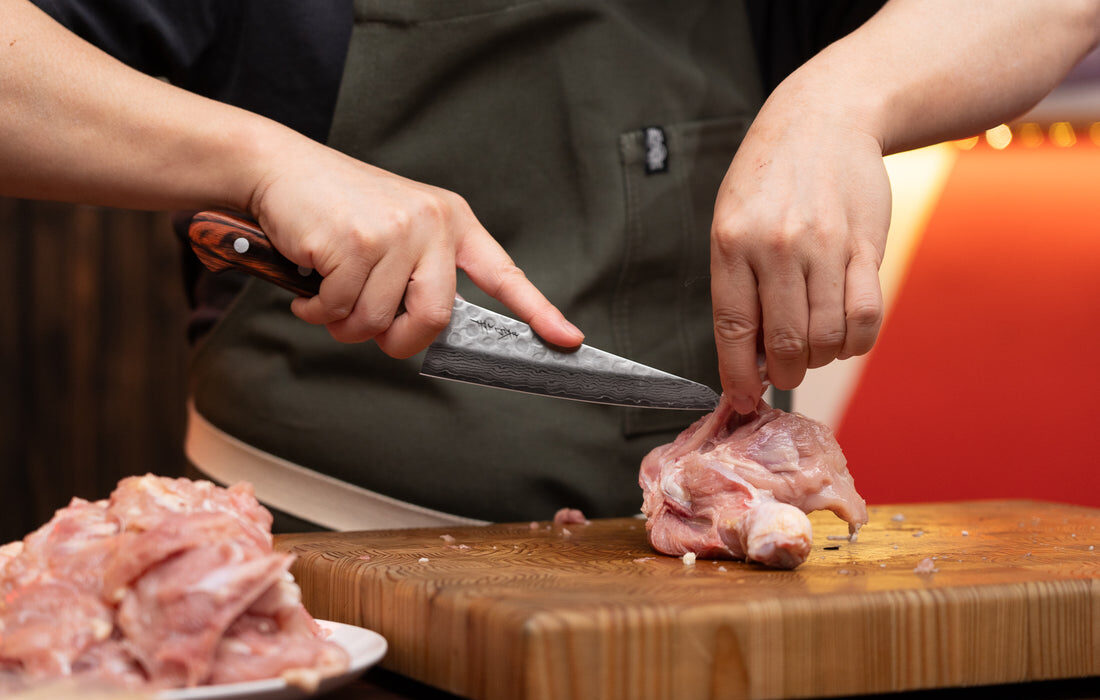When it comes to knife sharpening, two giants stand out: German vs Japanese sharpening. Both these methods have their unique characteristics, and understanding them can make a significant difference in your kitchen experience. Whether you’re a professional chef or a home cook, knowing the nuances of these sharpening techniques can help you maintain your knives properly and enhance your culinary skills.

Understanding the Basics of Knife Sharpening
Knife sharpening is an essential skill in any kitchen. A sharp knife makes cooking easier, safer, and more enjoyable. But sharpening is not just about making a blade sharp; it’s about maintaining the right angle, achieving the right edge, and understanding the material of your knife.
The Art of German Sharpening
German sharpening techniques are renowned for their durability and strength. German knives are typically sharpened at a 20-degree angle, which provides a robust and long-lasting edge. This angle is perfect for heavier tasks like cutting through bones or tough vegetables.
Materials Used in German Knives
German knives often use softer steel, which means they are less likely to chip and are easier to sharpen. This makes them ideal for those who prefer a low-maintenance knife that can withstand rigorous use.
For more on German knife materials, check out this German knife hardness scale.
Why Choose German Sharpening?
The choice of German sharpening is ideal for those who value durability and versatility. German knives, with their thicker blades, are perfect for everyday tasks and can handle a variety of cutting jobs without losing their edge quickly.
The Precision of Japanese Sharpening
In contrast, Japanese sharpening focuses on precision and sharpness. Japanese knives are usually sharpened at a 15-degree angle, making them incredibly sharp and ideal for delicate tasks such as slicing fish or vegetables.
Materials Used in Japanese Knives
Japanese knives typically use harder steel, which allows them to maintain a sharper edge for longer. However, this hardness also makes them more prone to chipping if not handled carefully.
For more insights into the materials, visit this Japanese steel vs German steel comparison.
Why Choose Japanese Sharpening?
If precision and sharpness are your priorities, then Japanese sharpening is the way to go. These knives are perfect for chefs who need precise cuts and efficient slicing.
Comparing German vs Japanese Sharpening
Both German vs Japanese sharpening have their pros and cons. German knives are robust and versatile, while Japanese knives offer precision and sharpness. The choice between the two depends on your cooking style and the tasks you perform most frequently in the kitchen.
Edge Retention
Edge retention is a crucial factor. Japanese knives, with their harder steel, tend to hold their edge longer than German knives. However, they also require more care to prevent chipping.
Ease of Sharpening
German knives, being made of softer steel, are generally easier to sharpen. This makes them a practical choice for those who prefer to sharpen their knives regularly without professional help.
To learn more about maintaining German knives, read this guide on how to hone German knives.
Choosing the Right Knife for Your Needs
Choosing between German vs Japanese sharpening ultimately depends on your personal needs and preferences. Consider the tasks you perform most often in your kitchen and choose a knife that complements your cooking style.
For Professional Chefs
Professional chefs might prefer Japanese knives for their precision and ability to perform intricate cuts. However, a German knife’s durability might be more suitable for high-volume kitchens.
For Home Cooks
Home cooks might lean towards German knives for their versatility and ease of maintenance. However, if you’re a cooking enthusiast who enjoys precision, a Japanese knife could be a great addition to your kitchen.
Maintaining Your Knives
Regardless of your choice, maintaining your knives is crucial. Regular sharpening, honing, and proper storage can prolong the life of your knives, ensuring they perform at their best.
Sharpening Tips
Here are some tips for maintaining both German and Japanese knives:
- Use the right sharpening tools for each type of knife.
- Keep the original angle of the blade when sharpening.
- Regularly hone your knives to maintain their edge.
For more sharpening techniques, explore this detailed guide.
Conclusion
In the debate of German vs Japanese sharpening, both have their unique strengths. The right choice depends on your individual needs, cooking style, and maintenance preferences. Whether you choose the robust German techniques or the precise Japanese methods, understanding these sharpening traditions will enhance your culinary experience.

FAQs
What is the main difference between German and Japanese sharpening?
The main difference lies in the angle and material. German knives are sharpened at a 20-degree angle, while Japanese knives are sharpened at a 15-degree angle. German knives use softer steel, and Japanese knives use harder steel.
Are Japanese knives harder to maintain?
Yes, due to the harder steel, Japanese knives require more care and are more prone to chipping. However, they maintain their sharpness longer.
Can I use the same sharpening tools for both German and Japanese knives?
It’s best to use tools specifically designed for each type of knife to maintain the correct angle and edge.
This article contains affiliate links. We may earn a commission at no extra cost to you.


